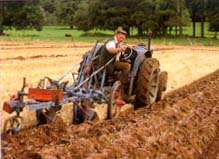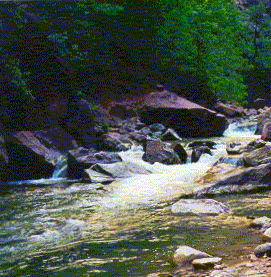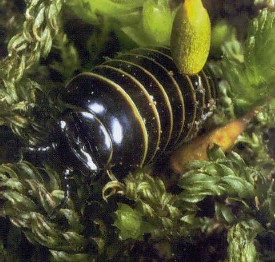Soil and the Economy
Soil plays a crucial role in the economy of countries. Farming and agricultural industries are probably the most reliant upon soil, particularly in respect to crop production, which has risen dramatically in the last 50 years in order to cope with the demands of an equally rapidly growing global population.
The demand for more crops has increased the demand for plant nutrients in the form of fertilisers. For a long time, many farms relied on animal manure for this. However most farms in the west now use artificial fertilisers, because it allows more control over which nutrients should be applied to the soil and when.
In the developed countries of the world it has been possible to increase the productivity of soils immensely because of the introduction and development of such fertilisers For example, the use of nitrogen fertilisers has increased 15-fold in the UK in the last 50 years, and over the same period yields of some crops have trebled. Research conducted into crop growth, and how soils release nutrients to plants, has enabled farmers to use suitable and better adapted fertilisers for different crops and soils, and thus add to the fertility of their soils.
There are many other economic land uses that are dependent on the soil, particularly forestry. Trees are usually longer term 'crops' in which an important relationship is built up with the soil to establish a nutrient balance.
Organisms in the soil
It is hard to believe that a single teaspoonful of soil contains over 4 billion micro-organisms, which is more than half of the planet’s entire human population!! Can you even begin to imagine how many you would find in a garden, or even your nearest park?
Soil is populated by an amazing variety of living creatures, ranging from tiny microbes such as bacteria and fungi (microbeasts), to smaller insects such as centipedes and other animals such as worms (minibeasts) and larger animals such as moles and rabbits.
Many of these organisms have very important functions. For example, certain microbes can break down resistant organic matter such as lignin, or chemicals such as toxins and pesticides. Others perform a similar process on minerals,thereby releasing nutrients for the plant.
Bacteria, an essential group of soil micro-organisms, are responsible for much of the decomposition of organic material in soils. They are usually present in top soils in very large numbers and play an important role in converting more inert forms of nitrogen to ones that can more readily be taken up by plants.
Earthworms are another vital species, because they help in the decomposition of organic matter in the soil, as well as improving vital functions such as aeration, water infiltration, and drainage. In fertile soils they can number 2 million per hectare or more! When it rains, worms will come to the surface so they don't get drowned. Go and look!
|
|
|
Soil and Water
There is an important link between soils and water, the quality of our water being closely linked to the quality of the soils.
Water in the soil supplies plants and animals, but acts also to transport nutrients and other important substances from the soil to plants, microbes etc.
However, too much water can have damaging consequences. For example excessive rainfall can result in problems like soil erosion, and can waterlog plants and vegetation thus depriving their roots of air. Thankfully, certain properties of soil can reduce the possibility of this happening.
There are several stages in the interaction of water with soil. Firstly, it enters the soil through a process known as infiltration – the higher the rate of infiltration, the more water is soaked up by the soil, and will be available to plants. Also, less water will run off the surface, eroding the soil, and washing away nutrients.
Secondly, water is stored in the soil and released when required by plants. Following this, drainage (percolation) of the water occurs when there is too much for the soil to cope with – the excess water drains freely out of the soil, taking with it dissolved and suspended material in a process, known as leaching. Soils can vary greatly in their ability to perform these functions.
| |



No comments:
Post a Comment